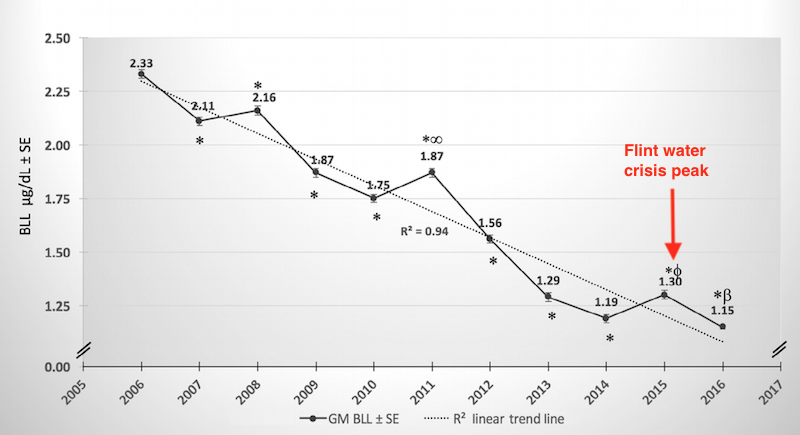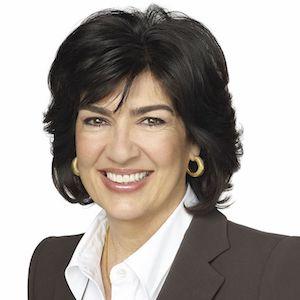CNN's Christiane Amanpour has a unique relationship with reality.
While she has made a very big deal of her adherence to the truth and nothing but the truth, the matter is a bit more complicated: Ms. Amanpour is an incredibly intelligent person who paints highly distorted views of the world -- mostly by selectively providing or withholding facts -- and presents them as objective journalism.
Most of her biases are political and therefore of no interest to us. However, a recent segment on Ms. Amanpour's TV program about the Flint water crisis was so incredibly misleading, that a corrective is in order.
Spreading Hysteria About the Flint Water Crisis
Ms. Amanpour interviewed Dr. Mona Hanna-Attisha, who played a role in alerting the public to the contamination of Flint's water supply with lead. The EPA considers a lead concentration of 15 parts per billion (ppb) to require mitigating action, and some Flint tap water samples had readings well over 100 ppb. One sample was 13,000 ppb. Obviously, that was dangerous and unacceptable, so Dr. Hanna-Attisha performed a public service.
Unfortunately, she has become something of a demagogue since then. And Ms. Amanpour cheered her on, beginning the segment (0:50) by bizarrely linking the story to President Donald Trump, even though the Flint water crisis occurred in 2014 and 2015.
Dr. Hanna-Attisha begins by claiming that there is no safe level of lead. That's absurd on its face, considering that lead is naturally found in the soil as well as in many of the pipes that make up our water infrastructure. If there was no safe level of lead, then we would all be unhealthy or dead. Indeed, the average blood lead level for an American adult is 1.2 µg/dL, and the CDC considers anything above 5 µg/dL to be "elevated."
What was the average blood lead level in children during the peak of the Flint water crisis? A paper from the University of Michigan concludes 1.3 µg/dL, which is perfectly normal. In fact, the average blood lead level in children was lower during the crisis than it was from 2006 to 2012, when there was no crisis. (See modified figure.)

This graph shows rather definitively that the potential public health crisis never materialized. When Flint's residents were told to stop drinking the tap water, thankfully, they did so. Additionally, the percentage of children with blood lead levels of 5 µg/dL or higher dropped from 11.8% in 2006 to 3.2% in 2016. (To put that into perspective, in the 1970s, nearly everyone in Newark, New Jersey had blood lead levels higher than 5 µg/dL.)
The conclusion is unmistakable: Despite the temporary setback caused by the water crisis, Flint's children are not being poisoned. The data simply do not support an alarmist version of events.
Yet, alarmism and fearmongering is exactly what Ms. Amanpour and Dr. Hanna-Attisha gave the audience. Ms. Amanpour said that many children "now live with the irreversible effects" of lead poisoning (1:30), and Dr. Hanna-Attisha claimed the Flint water crisis was the "most important... public health disaster of this young century." (4:00) And for good measure, if you disagree with this, Dr. Hanna-Attisha says you're a science denier (9:10).
Of course, a brief scan of the headlines reveals her claim about Flint to be utter nonsense. Several months ago, a hepatitis A outbreak in San Diego affected 600 people, most of whom were homeless, killing 20. Altogether, our collective inaction in addressing our nation's homelessness crisis results in the deaths of thousands of people every year. The drug overdose epidemic is taking tens of thousands of American lives every year. Wouldn't those be better candidates for the biggest public health disaster of this young century?
Apparently not when the cameras are rolling and there's a political point to be made and a book to sell.
I sent a list of questions, based on the data I presented above, to Dr. Hanna-Attisha, challenging her conclusions on scientific grounds. She didn't respond.




